Why gut kitchen renovations are out
Join the countermovement with nine lessons for more sustainable kitchen design from Sophie Donelson's new book.
I’ve got kitchens on the brain.
This is in no small part due to my friend Sophie Donelson’s new book Uncommon Kitchens (Barnes & Noble, Bookshop.org, and Amazon, if you must), which I gobbled up over Memorial Day weekend. Sophie and I talked about this book a lot while she was writing it, and I’d even gotten a chance to see a digital preview of the book before publication, but I was still unprepared for how fantastic it is. This is one of those rare design books that offers loads of gloriously gorgeous photos and a ton of practical, nitty-gritty advice. Uncommon Kitchens is jam-packed with wisdom. I was also surprised to realize I don’t already own a single design book devoted just to kitchens, and it is so satisfying to get a whole beautiful book on one room.
But! Why am I yammering on about an admittedly quite fancy kitchen design book here on LIVING SMALL where I promote rejecting renovation culture and learning to love what you’ve got?
Because Uncommon Kitchens is also a stealthy manifesto for more sustainable kitchen design.
Flip through its pages and you will see plenty of professionally-designed cooking spaces, but you might also notice: None of them are huge. You’ll also find many kitchens that were not gut-renovated and that is intentional. Sophie* writes, “A light touch renovation—think scalpel, not sledgehammer–is not only the more environmentally responsible choice (construction waste accounts for nearly half of landfill content worldwide–gross), but it makes the impending design choices remarkably easier.” This attitude is what qualifies Uncommon Kitchens as an essential title in my LIVING SMALL library. Kitchens must be refreshed from time to time, and if it’s your kitchen’s time, you could ask for no better guide than Sophie.
Below are 9 lessons for sustainable kitchen renovations from Uncommon Kitchens:
I’m giving away a copy of Uncommon Kitchens to paid subscribers (details on that below). If you’re not already a supporter, there’s still time to join for a chance to win. Giveaways, discount codes, and other goodies are one of the benefits of being a premium LIVING SMALL subscriber.
Find your keepers
“Eyeing a less-than-perfect space for the elements you can keep versus what to scrap–that’s a thoughtful and responsible approach to renovating, but woefully uncommon,” Sophie writes. Ask yourself what’s worth salvaging or restoring. This is not just sustainable, it can be a source of inspiration. “Limitations, as most artists know, force ingenious solutions,” she notes.
Unfitted is more flexible
I regret that I never even considered an unfitted kitchen any of the times I renovated. If you’re unfamiliar with the term, “unfitted” refers to a kitchen in which the cabinetry and appliances aren’t all built-in. It’s relatively easy to change just one piece of an unfitted kitchen, whereas it is very hard to update a room with with built-in everything and paneled appliances in a small way.
Don’t dismiss secondhand
A thread that runs through Uncommon Kitchens is the homeowners willingness to embrace old things–be that cabinets or glassware. This book taught me that plumbing was standardized in the 1920s, so you can get to any hardware store and get a faucet that fits a hundred-year-old sink, which can be plumbed and brought back to life.
Bigger isn’t always better
If you’re embarking on a major renovation, I can guarantee your friends and family will encourage you to make your kitchen bigger, but in most cases, it’s unnecessary. “People with big budgets get in the mindset of creating a big space–and then there’s a need to justify all the space so they create storage, and the storage gets filled. But it doesn’t have to be that way; you can design efficiently,” Sophie writes. Architect Nate McBride was even more direct, telling Sophie, “Large kitchens are part vanity, part excess storage,” noting that if you “truly love cooking, you don’t want to move around in a big space.”
Be wary of “eco-friendly” materials
Frances Merrill of Reath Design points out that bamboo flooring, which is often sold as “eco friendly” has a short life (painting your subfloor might even last a lot longer as bamboo can’t be sanded down and refinished). Think about the life cycle of a material, not just its supposedly green provenance.
Wood cabinets are most sustainable. Period.
Solid wood cabinets can be repainted again and again, while modern cabinetry made from materials like “MDF and polyurethane paints look plastic, wear out quickly, and can’t be restored,” writes Sophie. (And my two cents: Don’t believe those bloggers and influencers who tell you that you can paint your IKEA cabinets: You can’t do it well.)
Coordinate with what you’ve got
If you’re using paint and other colorful accents to update and existing kitchen, it’s important to build off the existing palette, Sophie cautions. In content creator Jessica Rhodes’ kitchen, “a wink of red” in the countertops steered her towards blue cabinets instead of the olive green she was initially leaning towards.
Leave room for change–and know you’ll never be done
Fashion designer Poppy Lissiman told Sophie, “Tastes grow and change, and you want a house that can change alongside you.” While interior designer Liz MacPhail (that’s her studio’s kitchen above) said, “I subscribe to the school that decorating is never done. It’s a process, a hobby, a lifestyle.” Architect Nate McBride chimed in with the advice, “Get it only eighty percent done! Don’t map out every design detail or furnish it all at once—leave room and time for living in it.” This advice appears throughout the book, because it’s at the heart of sensible and sustainable design.
Opt out altogether
I’m closing out on a quote from the book from designer Rodman Primack (his work graces the cover), who said, “Materials are so available now; we have so many choices, it’s so easy to say, oh, just tear it out. But if the kitchen works well, I’d much rather you buy a painting with that money.” Swap “painting” for whatever makes your heart flutter. Before you renovate, ask yourself if maybe there’s something else you’d rather spend your money and time on?
Uncommon Kitchens is available wherever books are sold, including Barnes & Noble, Bookshop.org, and Amazon.
Photo credits: White kitchen (top): Chris Mottalini; Cover: Stephen Kent Johnson; Portrait: Winky Lewis; Checkerboard floor kitchen (middle): Lindsay Brown; Blue kitchen (bottom): Laurey Glenn
GIVEAWAY!
🎁 I’m giving away a copy of Uncommon Kitchens to one paid subscriber of LIVING SMALL To enter, you must be a paid subscriber and leave a comment on this post; I’ll pick a winner by end of day next Wednesday, June 7.
Etc.
Rails to trails.
While riding the train back from Connecticut on Monday, the conductor announced that the next stop would be the “Appalachian Trail.” Sure enough the train stopped beside a dirt trail and a small platform with a bench and a backpacker with all his gear boarded. This, it turns out, is the only rail station located directly on the Appalachian Trail. Something about this trailside train stop restored my faith in humanity. New Yorkers, if you want to take advantage, trains to/from Grand Central stop there on Saturdays, Sundays, and holidays only, the station name is “Appalachian Trail.”
Chocolate cake.
My dad turned 80 yesterday (happy birthday, Dad!). We celebrated last weekend with a party at my parents house. I’d never made cake for such a large crowd before, so I was a wee bit nervous, but it all worked out splendidly, so I thought I’d share. I doubled my favorite chocolate cake recipe and baked it in three 10-inch layers. For frosting, I doubled the standard icing recipe on the Domino confectioner’s sugar box (basically 1 lb. of butter, 2 boxes powdered sugar, ⅔ cup cocoa powder and a little cream to loosen it up). The Kitchenaid mixer managed it all just fine. I’d say we could have eked out 30 (slender) slices.
I wrote about uncommon kitchens (and interviewed Sophie) for the Washington Post, as well (told you I had kitchens on the brain!). That article is out today in print, if you’re in the D.C. area.
I met photographer Patrick Biller at Sophie’s book party earlier this month. Patrick had an incredible Christmas fern tattoo that I loved. Thinking I might satisfying my admiration for his with these.
Swooning for this perfect little, low-maintenance London garden.
Anne Helen Peterson was on fire this week with her post about “the optimization sinkhole.”
That said, I do think there is a perfect coffee maker.
Recently brought back into print, and I am extremely intrigued.
Well, isn’t this just dreamy? (I love everything Heidi does.)
I just found out that my fave Dirty Labs laundry detergent has a give $5, get $5 program, so I’m sharing the link! This is a green detergent that really works and the concentrated formula in a small bottle is so convenient for schlepping to the laundry room in my building. I usually buy fragrance free, but I also like their Magnolia/Bergamot/Cedar scent—and I am super-picky about fragrances.
That’s all for this week, friends! Thank you so much for being a part of the LIVING SMALL community! If you enjoyed this post, please share this with a friend: Substack newsletters thrive on word of mouth.


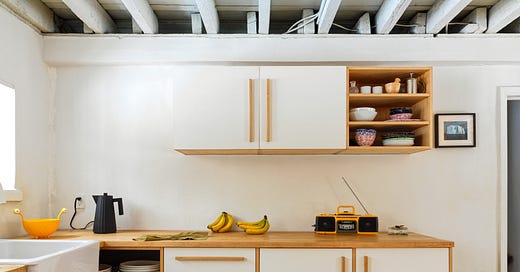



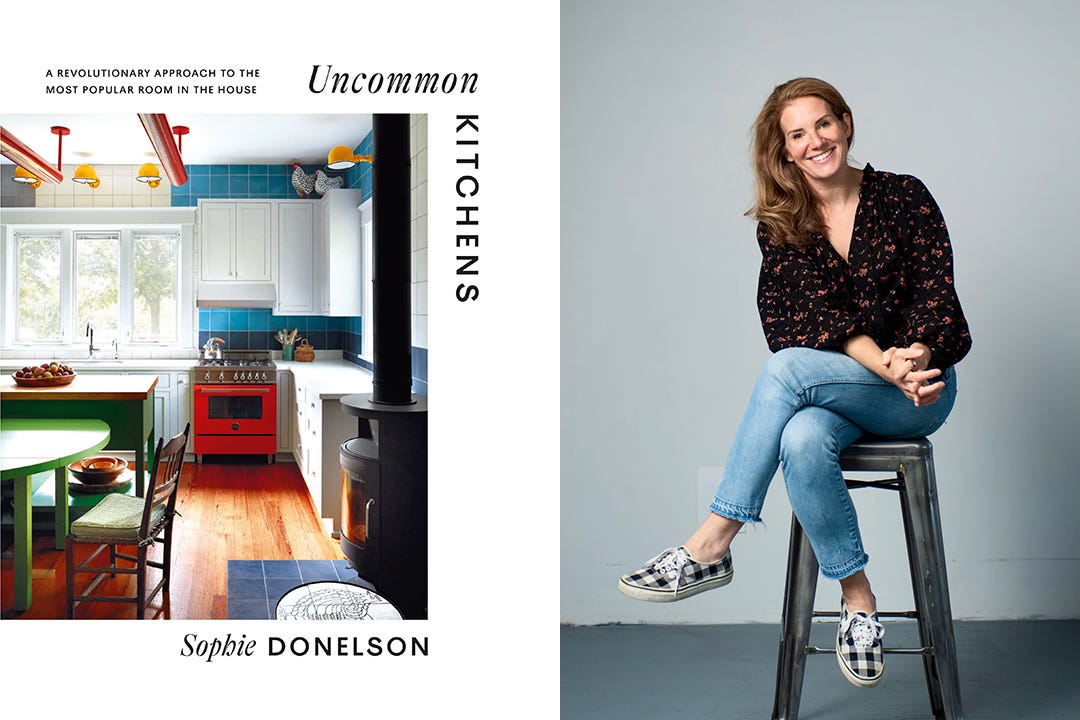
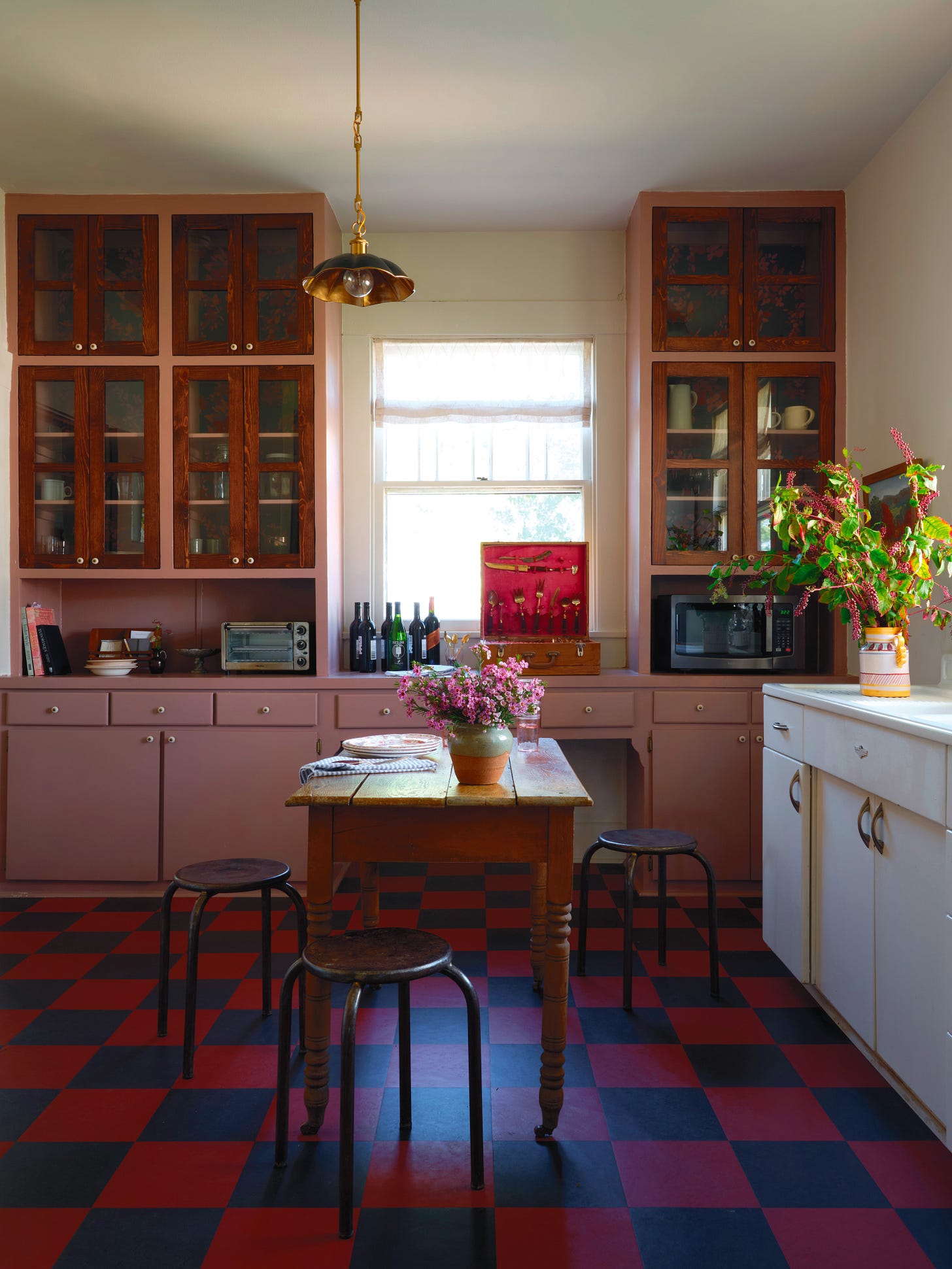
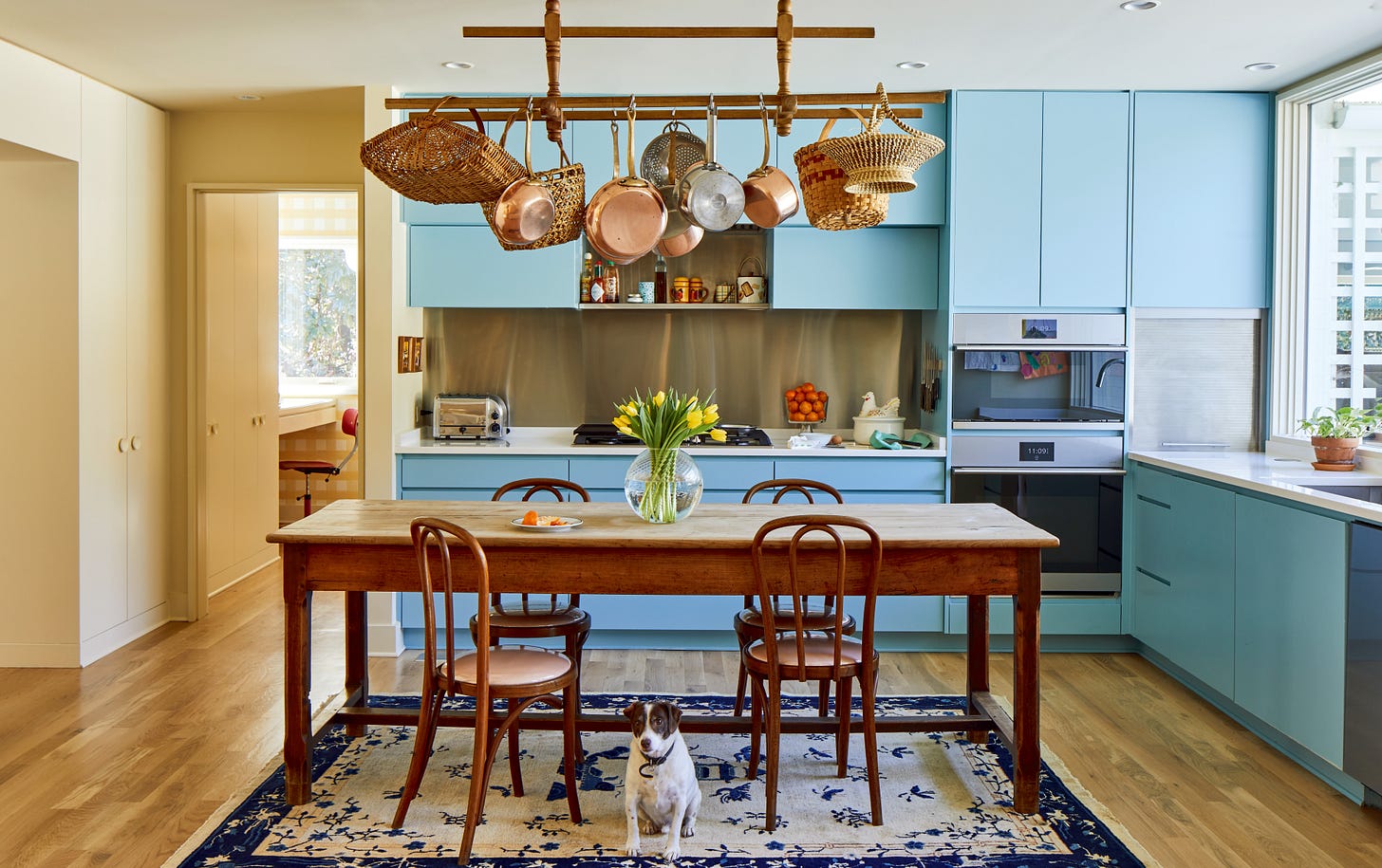
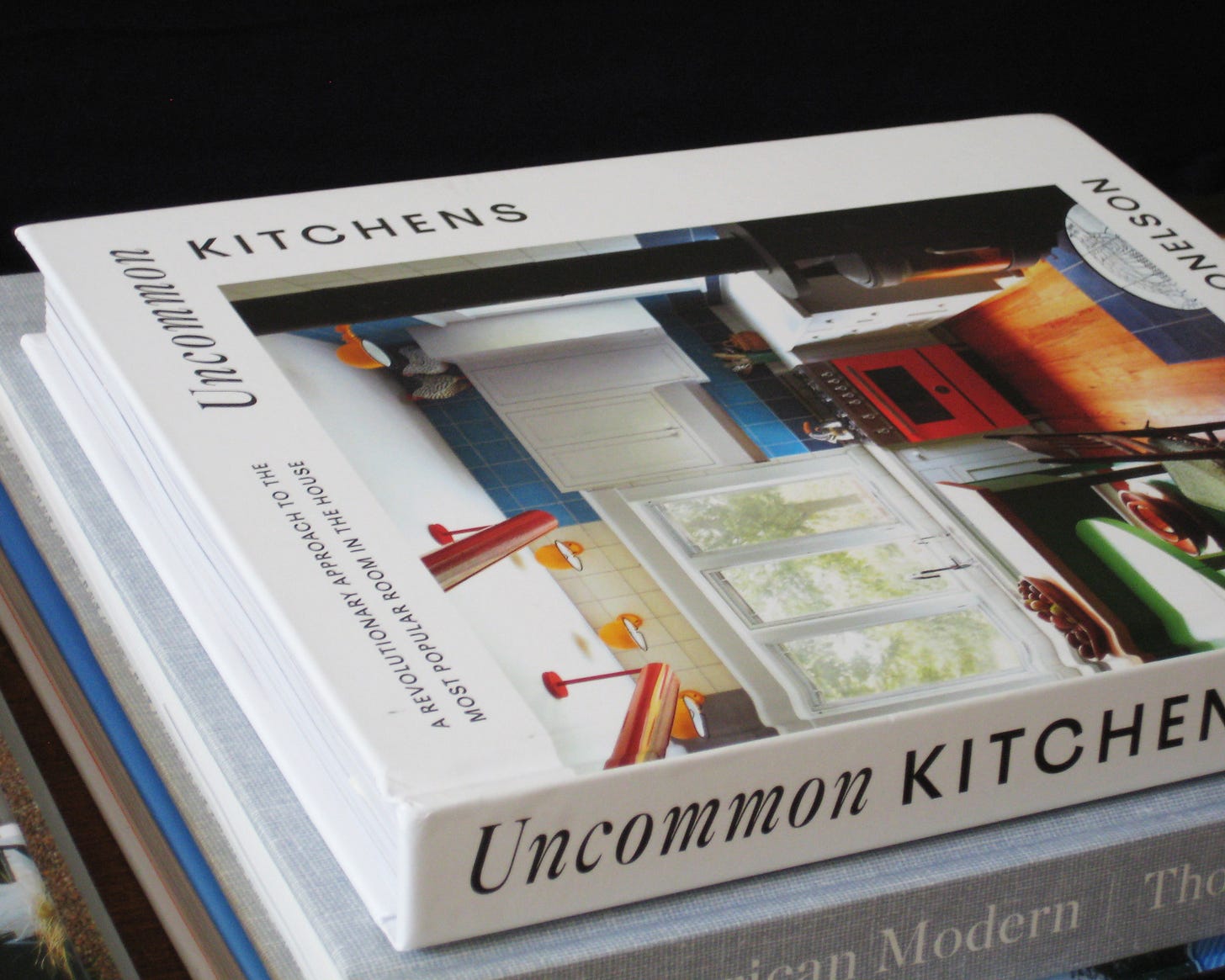
I love this idea. I live in a 1950's ranch-style house, and the kitchen cabinets were built by the original tenant. They're built to fit the space *exactly*. My partner and I have discussed a complete reno, but we always come back to what's already there--and what's already working. Had we been the original builders, might we have done things differently? Of course. Can we live happily with what's already there/been done for us? You bet.
My husband and I just had an offer for a house accepted and signed all the beginning paperwork about an hour ago. We are so excited! Reading this article really made me feel good about this 1000 sq ft fixer upper we are (inspection willing!) buying, especially the cute kitchen. When I got to the part about keeping wood cabinets, I went back to the listing pictures and confirmed that the kitchen does have wood cabinets! We want to make it our own but will definitely work with what is there. And buy some art instead of new countertops.